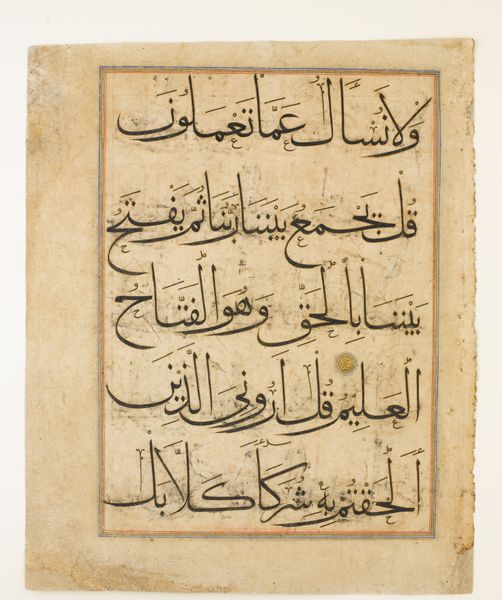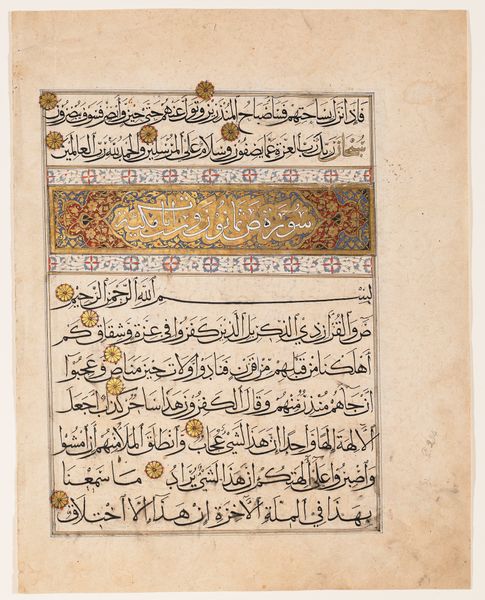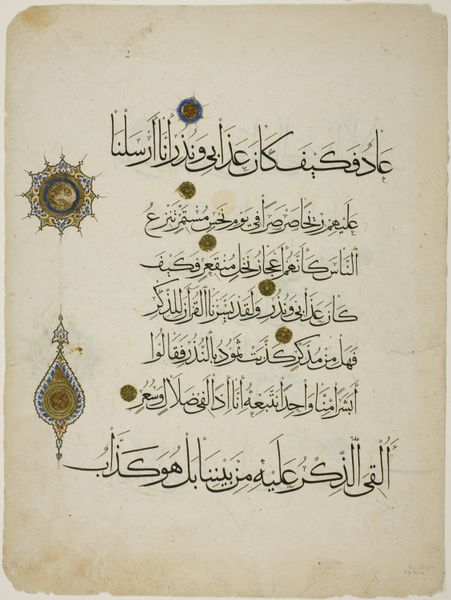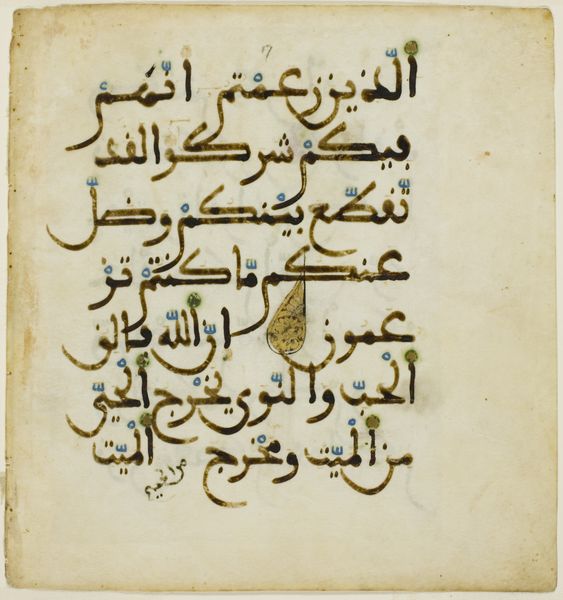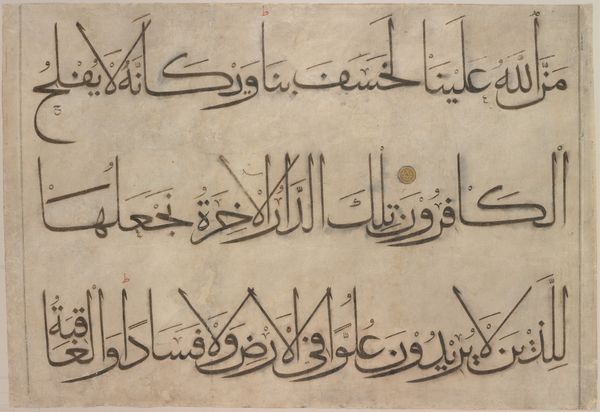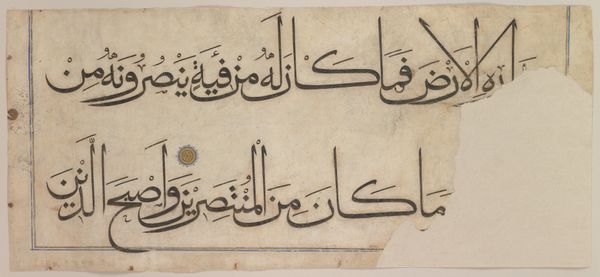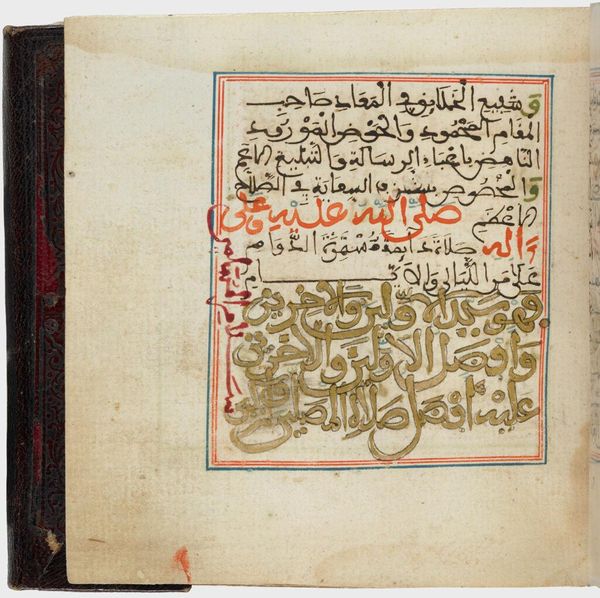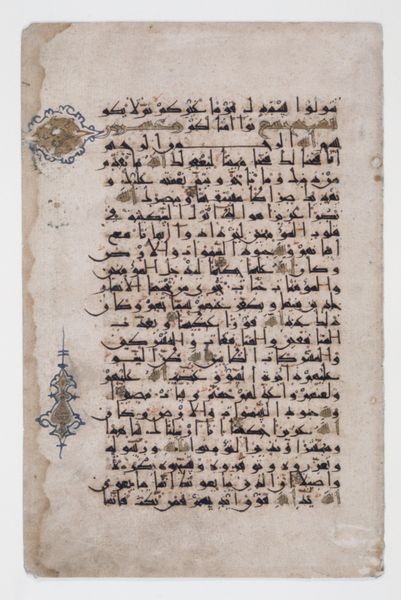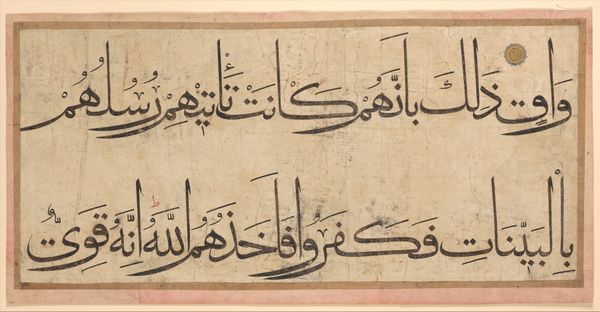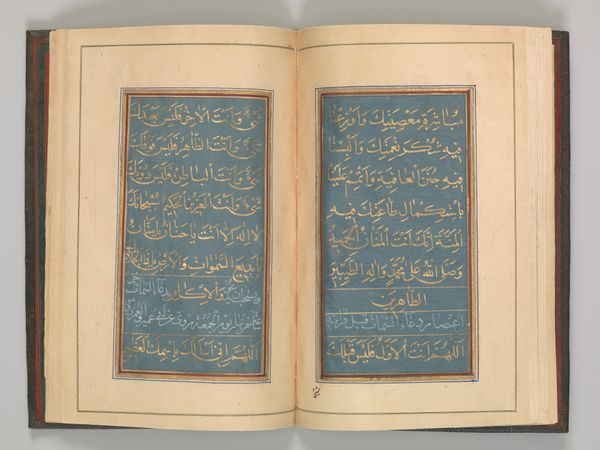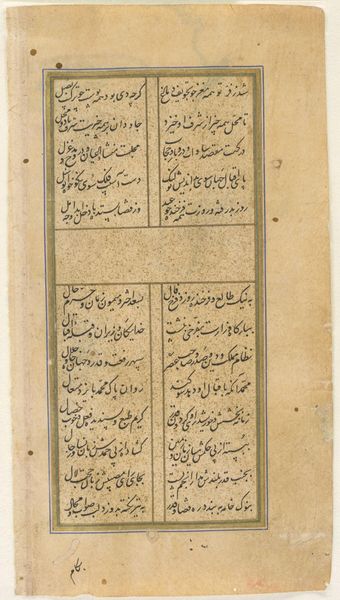
textile, paper, ink
#
textile
#
paper
#
ink
#
islamic-art
#
calligraphy
Dimensions: 13 1/2 x 8 1/2 in. (34.29 x 21.59 cm) (image, sheet)
Copyright: Public Domain
Curator: Here we have a page from the Koran, dating back to the 13th century. It's created with ink on paper, reflecting the exquisite craftsmanship of Islamic art. Editor: My immediate reaction is a sense of reverence, almost hushed. The careful, flowing lines evoke a meditative state. Curator: Indeed. The calligraphic style is incredibly important. In Islamic art, calligraphy is more than just writing; it’s a visual representation of divine words, imbued with spirituality. Editor: I'm interested in thinking about the historical context too. Consider how access to religious texts, especially something as sacred as the Koran, shapes power dynamics. This isn’t merely aesthetic; it's deeply embedded within social structures. Who could access it, who could interpret it? Curator: Precisely. The artistic embellishments aren't just decorative either; they guide the eye and help the reader navigate the text, serving as markers and visual cues. They amplify the text’s inherent authority. Editor: Thinking about these marks—almost like the architectural flourishes on religious monuments that serve the elite. Were the illuminations standardized or reflective of regional traditions and local power structures? The artistic and historical aspects should be examined together to enrich our view. Curator: That’s an excellent point. The artistic style may differ from region to region reflecting the melting pot of ideas. We can clearly notice some flower like designs that reflect geometric sensibility within the theological doctrine. Editor: The symbolism creates the meaning but sometimes limits creativity because it's rigid and formalized, but nonetheless an essential lens to understanding a faith as the root of culture. It invites us to see faith represented in beauty. Curator: This page gives us so much to think about when considering artistic beauty alongside both theological and historical contexts. Editor: Yes, it’s a powerful reminder that art doesn’t exist in a vacuum; it carries stories, histories, and the very essence of culture.
Comments
minneapolisinstituteofart almost 2 years ago
⋮
This page, from chapter 7 of the Koran, is executed in elegant gold cursive script with thin black outlines. The vowels and diacritical marks are in red; the reading marks are in blue and black. The gold rosettes indicate the end of a verse.
Join the conversation
Join millions of artists and users on Artera today and experience the ultimate creative platform.
